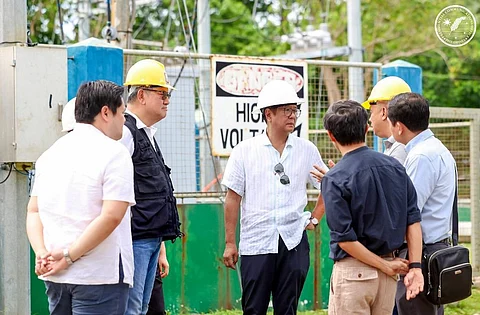
- NEWS
- the EDIT
- COMMENTARY
- BUSINESS
- LIFE
- SHOW
- ACTION
- GLOBAL GOALS
- SNAPS
- DYARYO TIRADA
- MORE

President Ferdinand Marcos Jr. has flipped the switch on every administration’s ambitious plan to electrify the entire nation, vowing to power up the remaining three million Filipino homes still in the dark and push sweeping reforms in the country’s energy sector before he steps out of office in 2028.
“Upon the start of this administration, more than five million homes were without electricity. Within three years, we have been able to provide electricity to two and a half million of these households,” Marcos said during his State of the Nation Address on Monday.
Marcos said the government aims to energize over a million more households through solar home systems by 2028, with efforts led by the Department of Energy (DoE) and the National Electrification Administration (NEA).
He added that nearly 200 power plants are expected to be completed within the next three years.
“This has the capacity to provide power to four million households, or to more than 2,000 factories, or to nearly 7,000 offices and businesses,” he said.
To recall, the NEA directed the largest share of its P3.6-billion rural electrification budget this year to Mindanao to bring electricity to more Geographically Isolated and Disadvantaged Areas.
Based on data from NEA’s Total Electrification and Renewable Energy Development Department released on Friday, Mindanao will receive P2.5 billion, or 68 percent of the total funding.
The allocation will support electrification projects in Zamboanga del Sur, Zamboanga del Norte, Bukidnon, Lanao del Norte, Misamis Oriental, Davao del Sur, North and South Cotabato, Sultan Kudarat, Agusan del Sur, Surigao del Sur and Sulu.
Programs are also lined up for the Bangsamoro Autonomous Region in Muslim Mindanao, specifically in Tawi-Tawi, Maguindanao del Norte and Sur and Lanao del Sur.
Luzon has been allotted P701.2 million, or 19 percent, for projects in Cagayan, Nueva Vizcaya, Kalinga, Oriental and Occidental Mindoro, and Palawan.
The Visayas region, on the other hand, will receive P462.6 million, or 13 percent, to improve electricity access in Antique, Capiz, Iloilo, Negros Occidental, Siquijor, and Eastern and Northern Samar.
Affordable power
Marcos acknowledged that while the country has become globally recognized for its commitment to renewable energy, many Filipinos still suffer from power interruptions and high power costs.
To address affordability, the government will expand the Lifeline Rate to include families listed in the government’s Listahanan database whose power consumption does not exceed the threshold.
“While we are working to fix our country’s complex energy system to lower prices, we are also extending the Lifeline Rate,” he said.
Marcos also directed the DoE to advance the Net Metering Program, which allows consumers to save on electricity and sell excess power back to the grid, and requested that the Energy Regulatory Commission expedite its approval process.
Siquijor power woe slammed
Meanwhile, Marcos ordered concerned power companies to improve their operations — and issue refunds to consumers if necessary — as the government moves to restore electricity in the entire province of Siquijor before year-end, following prolonged brownouts.
Marcos said the government’s investigation uncovered multiple operational failures that left Siquijor in crisis and forced local officials to declare a state of calamity.
“We will investigate these failures. Power companies must improve their management, and if necessary, issue refunds to affected consumers,” the President said.
Marcos directly called out the situation in the island-province, citing the heavy toll on its economy and essential services.
“I will not ignore what happened in Siquijor. Because of widespread brownouts, the province was even forced to declare a state of calamity. This caused great hardship to the people there — their tourism, businesses, hospitals, and various services were all affected.”
Among the issues found were expired permits, broken and neglected generators, slow response times, and the lack of a system for purchasing fuel and spare parts.
As such, Marcos directed the Department of Energy, the National Electrification Administration, and the Energy Regulatory Commission to act swiftly and ensure full restoration of electricity before the end of the year.
Marcos also committed to long-term solutions, including the development of new power facilities to prevent future outages. “We will ensure the establishment of facilities for a long-term solution to their power issues. This should never happen again,” he said.
At one point during the President’s speech, the camera lingered on Senator Camille Villar, daughter of billionaire businessman and former Senate President Manny Villar.
The Villar family controls Prime Asset Ventures Inc., the parent firm of S.I. Power Corp. (SIPCOR). It supplies power to the Province of Siquijor Electric Cooperative Inc., which handles distribution.
Last month, SIPCOR said Siquijor’s power supply was fully restored after it completed key repairs and deployed two rental generators, raising its dependable capacity to 10,800 kilowatts — well above the island’s peak demand
The power generator said it is ramping up technical operations and daily assessments to ensure stable electricity across Siquijor.
